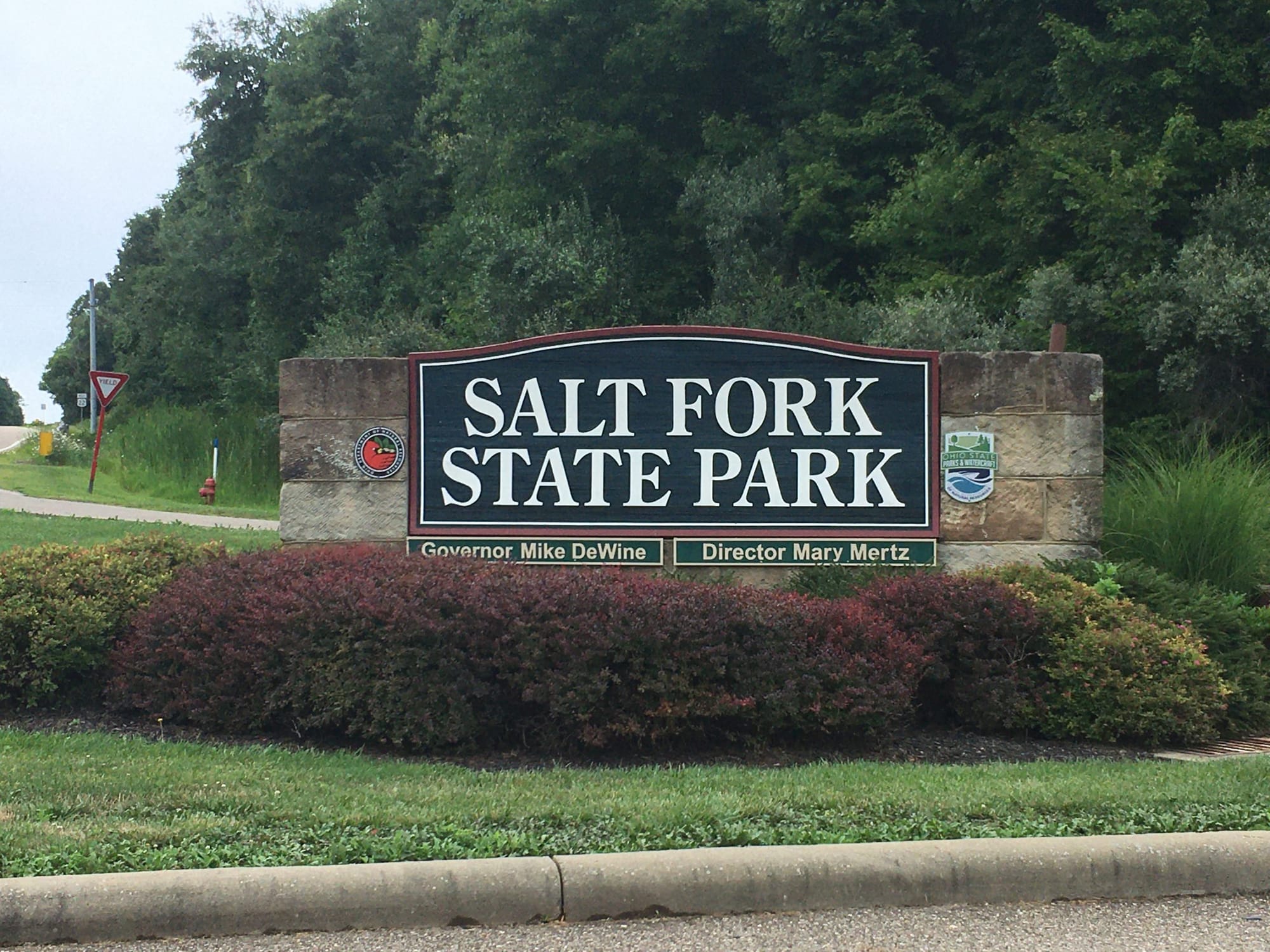
Salt Fork State Park
Trail Map
Interactive map showing the trail route for Salt Fork State Park. The map displays topographic information and trail markers.
Elevation Profile
Elevation data not available for this trail.
Chart showing elevation changes along the trail distance. Hover or focus on the chart to see specific elevation values at each point.

Salt Fork State Park is a public recreation area located six miles north of Lore City in Guernsey County, Ohio. It is the largest state park in Ohio. It has 17,229 acres of land and 2,952 acres of water.
The grounds include the Kennedy Stone House, which is listed on the National Register of Historic Places.
The park is managed by the Ohio Department of Natural Resources, Division of Parks and Watercraft.
Location of Salt Fork State Park
- Address: Salt Fork State Park, 14755 Cadiz Rd, Lore City, OH 43755
- Coordinates: Approximately 39.989° N latitude, 81.556° W longitude
- Region: The park is situated in southeastern Ohio, primarily in Guernsey County, with some parts extending into neighboring counties.
.jpg)
History:
Salt Fork State Park was established in 1957 and is named after the Salt Fork of the Muskingum River which runs through it. The park's name is in refer to the historical salt licks in the area, which were significant to early settlers and indigenous peoples.
Salt Fork is said to have derived its name from a salt well used by Native Americans, located near the southeastern corner of the park. This area was one of the first areas in Ohio to be settled by pioneers. Some of these settlers followed Zane’s Trace into the Ohio wilderness - a route which led them into the Guernsey County area. From Zanesville east to the Ohio River, the Trace became part of the National Road, a major east-west transportation route constructed in 1811. Today, the old National Road is known as U.S. Route 40 and passes near Salt Fork State Park.
The park’s creation was part of a movement in the mid-20th century to develop state parks for recreation and conservation.
Before settlement, Ohio was a forest stretching from the Appalachian Mountains to the Great Plains. Towering oak, hickory, beech, maple, walnut, chestnut, and ash trees (some more than 150 feet tall) were rooted in the soil. By 1900, most of Ohio’s original forest was gone. In its place was fields of wheat, corn, oats, hay, and thriving towns and cities.
Plans for developing the lake began in 1956. The reservoir was originally intended for a water source for the city of Cambridge. However, the potential for the area to become a major recreation area in the state was too great to be denied. In 1960, land acquisition was begun to create a state park. The earthen dam was completed in 1967, and construction of recreational facilities began in mid 1968. The spacious Salt Fork Lodge was opened in May 1972.
 - Copy.jpg)
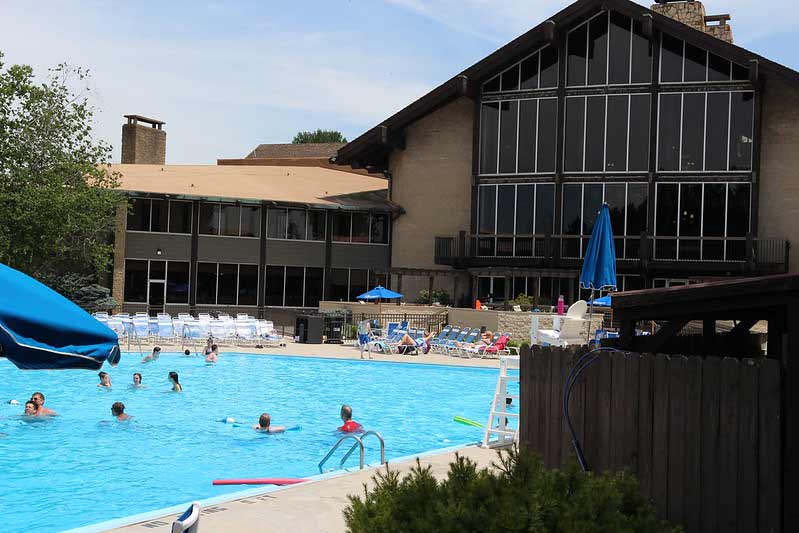
.jpg)
.jpg)
.jpg)
.jpg)
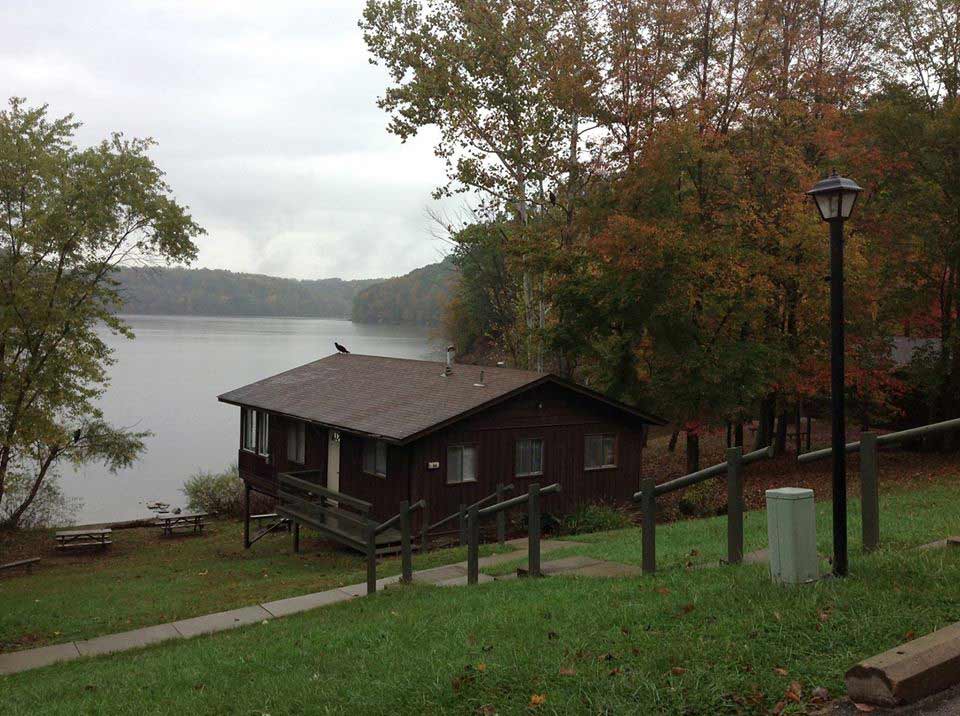
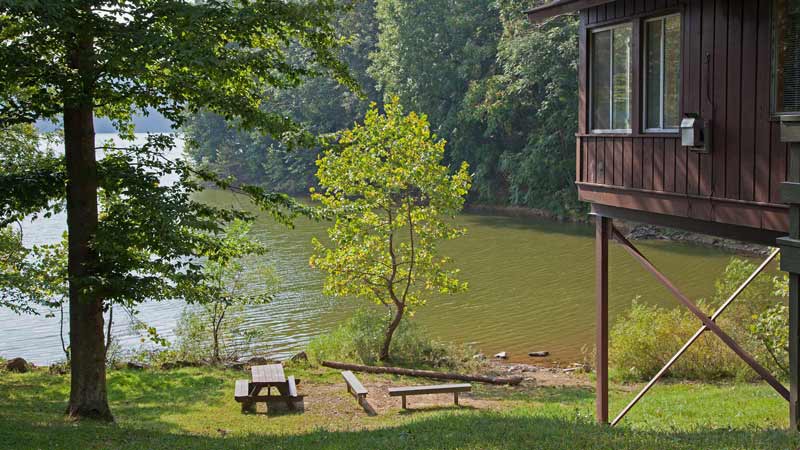
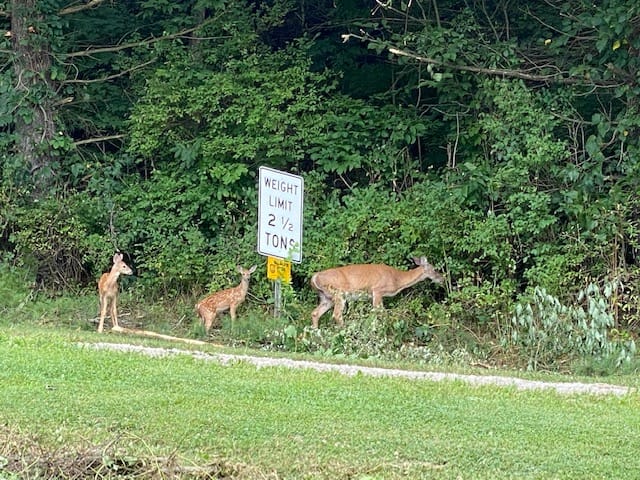
Amenities:
- Lodging: The park features a lodge with comfortable rooms, a restaurant, and meeting facilities. There are also cabins available for rent.
- Camping: There are both primitive and electric campsites, along with a modern campground with facilities.
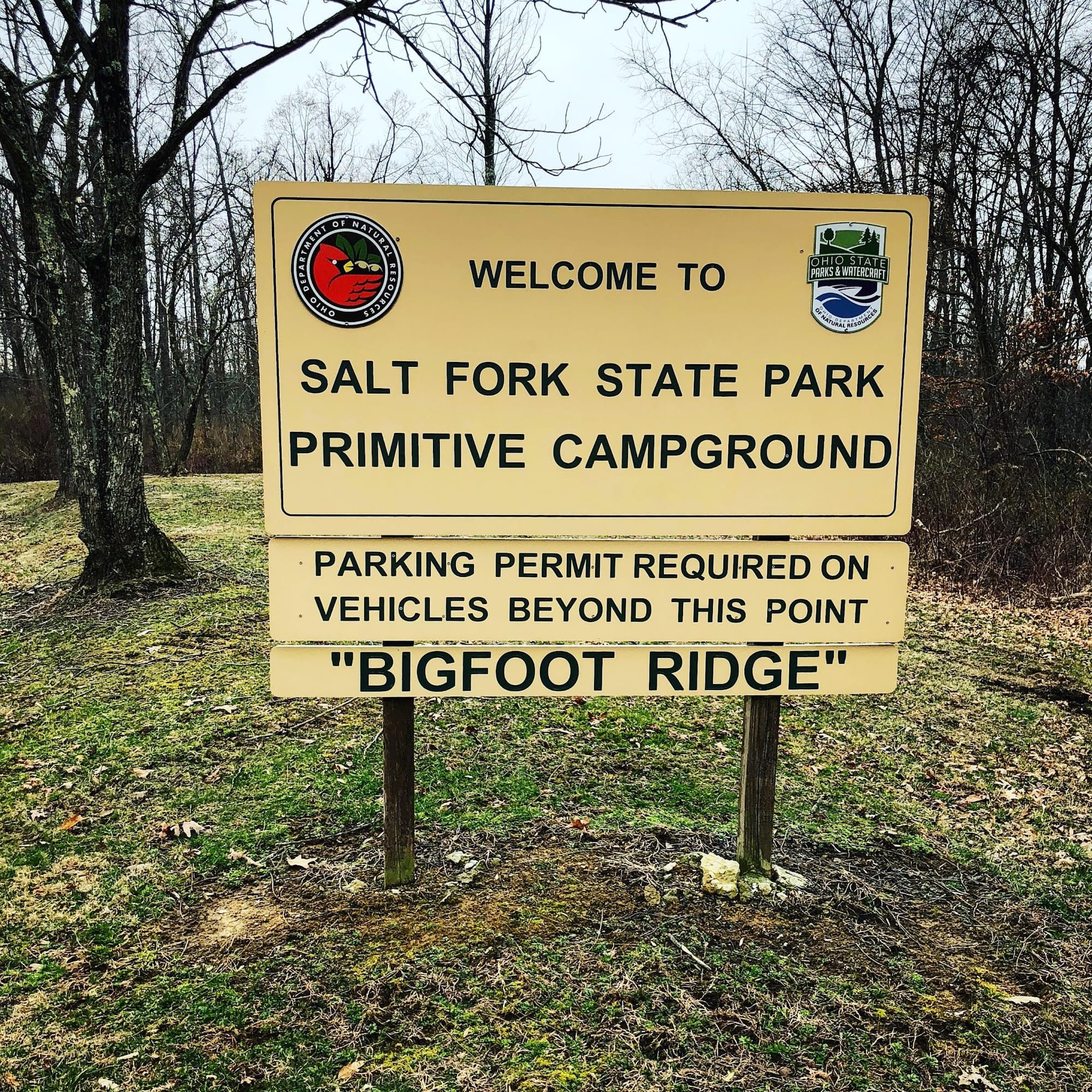
- Nature Center: The nature center is a good place to find varied information about Salt Creek State Park.
- Picnic Areas: Several picnic areas with tables and grills are scattered throughout the park.
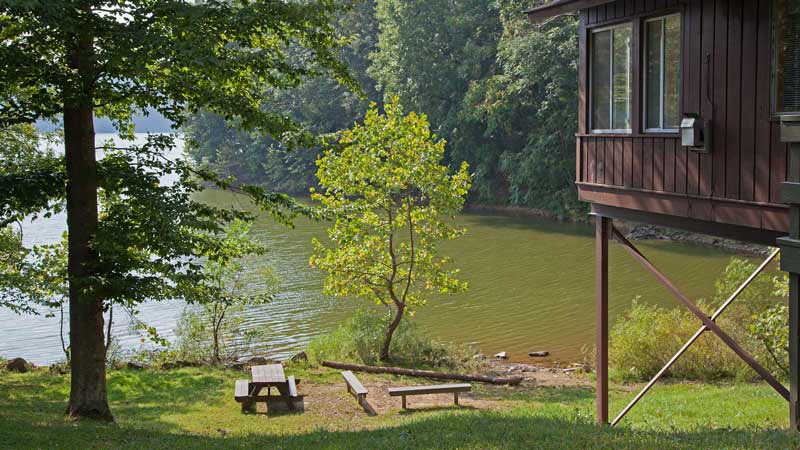
- Fishing: The park's lake offers opportunities for fishing, with various species such as largemouth bass, bluegill, catfish, walleye, muskellunge, and crappie.
- Hunting: There are designated areas for hunters with Ohio Hunting License.
- Boating: Boat rentals are available, and there are 2 marinas and 7 boat launching ramps for those who bring their own boats.
- Swimming: There is a 2,500-foot beach area for swimming in the lake.
.jpg)
- Horseback Riding: The park has horse camps and bridle trails for horseback riding.
- Golfing: There is an 18-hole golf course.
.jpg)
- Hiking Trails: There are many hiking trails with different distances and difficulties. Some are listed below in the Hiking Trails section.
- Snowmobiling: There are trails designated for winter use.
- Miniature Golf: There is a miniature golf course.
- Archery Range: The archery range is for public use.
Hiking Trails:
Salt Fork State Park offers a range of hiking trails with varying lengths and difficulty levels. Here are a few highlights:
- Salt Fork Trail: This is the main trail running through the park. It offers scenic views and a chance to experience the diverse flora and fauna of the area. The entire trail is approximately 14 miles long.
- The Lakeside Trail: This trail circles the lake, providing beautiful water views and is about 7 miles long. It’s relatively flat and easy, making it suitable for families.
- Bridle Trails: Several trails are designated for horseback riding and vary in length. They generally range from 3 to 10 miles.
- Sandy Ridge Trail: A moderately challenging trail that offers a bit more rugged terrain. It’s about 5 miles long and provides a more immersive natural experience.
- Whipple Trail: This is a shorter trail, around 2 miles, perfect for a quick hike with rewarding scenery.
Trails range from short 1-2-mile loops to longer 14-mile hikes. The park's layout allows for a mix of short hikes and longer ones for all different levels of hikers.
Kennedy Stone House
In 1837, Irish native Benjamin Kennedy bought 80-acre of land from Solomon Sturgis, who had obtained it as a land grant for military service. The house is built in a Victorian style with stone construction. Its design reflects the craftsmanship and architectural trends of that period. Built from local quarry stone, the Kennedy Stone House is a historical gem. The stone house overlooks Sugar Tree Fork. Stone was used for the walls, and slate covers the roof.
The house being only one room deep meant during the family's growth a new addition would be made. A two-story wooden-frame wing was added to the rear of the building and contained the summer kitchen and several bedrooms. This addition did not endure. The reconstruction only includes the summer kitchen.
A root cellar is located to the right of the house and built of thick stone blocks. The sides of the cellar are lined with dirt and plants to allow for cooler internal temperatures. The ceiling is penetrated by two diamond-shaped holes for ventilation and light. The well and a natural spring have been capped.
Kennedy's descendants owned and inhabited the house for more than a century. The state government bought the land in 1942, but Kennedys were permitted to continue living in the house. The Kennedys were involved in agriculture and contributed to the local community's development.
When Salt Fork State Park was being developed, the house could no longer be inhabited, and its final resident, Benjamin's great-great-grandson Don Kennedy, moved out in 1966.
The house is listed in the National Register of Historic Places. The house and surrounding structures were placed on the National Register on October 3, 1975.
In 1975 it was placed on the National Register and remained in its abandoned state. The roof was damaged during a storm when a tree branch fell through the roof, but the parks crew replaced it. This started a movement to fix the house, and it was named the Guernsey County Bicentennial Commission Legacy Program. Local volunteers cleaned up the area and soon transformed themselves into Friends for the Restoration of The Kennedy Stone House. Major restoration was done from 2000 to 2002.
The organization transformed itself into the Friends of the Kennedy Stone House Salt Fork State Park and maintains the house as a museum. One of the programs the organization performs is the docent program, where retirees or history students from Muskingum College occupy a cabin above the stone house and are charged as caretakers to the property.
It can be visited most weekends from May until October.
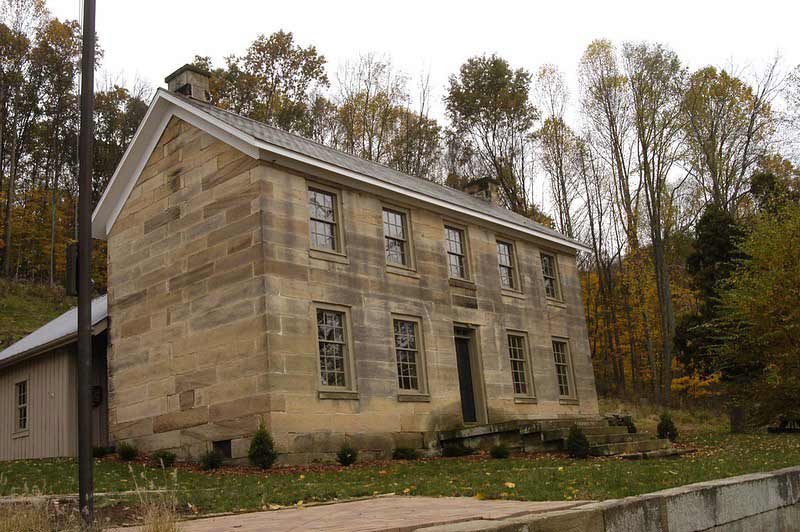
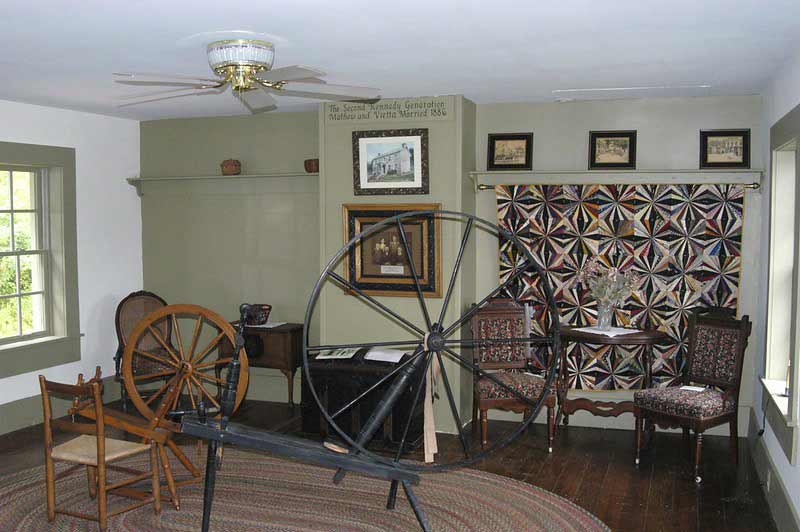
Mining and Fracking in the Area
Industry continued to develop in Ohio. Many of the southeastern Ohio counties became coal-producing areas. There was demand for this important fuel source, Guernsey County became one of Ohio's leading coal producers. Remnants of old mining operations can sometimes be found in the area.
Abundant reserves of clay allowed the development of a pottery industry in the county as well.
Historical mining activities have left their mark. Current mining operations are relatively limited in the immediate vicinity of the park. But mining in nearby regions can still impact the environment.
The region of southeastern Ohio, including parts of Guernsey County, has been involved in oil and gas production, including hydraulic fracturing (fracking). This has primarily occurred in the Utica and Marcellus shale formations.
Fracking operations can have environmental impacts, including potential effects on water quality, air quality, and natural habitats. While Salt Fork State Park itself is a protected area with conservation efforts, nearby fracking activities may have indirect effects on the park’s environment.
The Ohio Department of Natural Resources (ODNR) and other regulatory agencies oversee fracking operations to ensure compliance with environmental standards and minimize impacts. Public concerns and regulatory measures aim to balance energy production with environmental protection.
Salt Fork State Park, located in Ohio, has been the subject of discussions regarding drilling for oil and gas. Like many areas with natural resources, there can be tension between conservation efforts and energy development. Drilling activities can impact the environment, wildlife, and recreational opportunities.
Drilling activities can vary by year and depend on market conditions and regulations. It's important to check with local state authorities or park management for the most up-to-date information on any ongoing drilling operations.
Some state parks have areas where oil and gas drilling is permitted, often through leasing agreements with energy companies.
The Ohio Department of Natural Resources (ODNR) oversees oil and gas drilling in the state, including regulations specific to state parks. These regulations aim to balance resource extraction with conservation.
There may be public comment periods for proposed drilling projects, allowing residents and stakeholders to voice their concerns.
Resources for Updates
- ODNR Website: For the latest updates on drilling activities and regulations, the Ohio Department of Natural Resources' website is a valuable resource.
- Local News: Local news outlets may cover developments regarding drilling and its impact on Salt Fork State Park.
For the most current and detailed information, contacting park officials or checking with the ODNR directly would be the best approach.
Recently, two bids to Infinity Natural Resources to frack under Salt Fork State Park were approved. It will pay Ohio more than $58 million and a 12.5% royalty.
Salt Fork State Park and nearby Salt Fork National Forest
Salt Fork State Park and the nearby Salt Fork National Forest are located in a region rich with natural beauty and historical sites. However, there might be a bit of confusion. Salt Fork National Forest doesn't exist as a separate national forest. Instead, Salt Fork is part of the larger Wayne National Forest in southeastern Ohio, which is the only national forest in the state.
Wayne National Forest Overview
Wayne National Forest was established in 1934. It was created as part of President Franklin D. Roosevelt’s New Deal programs, which aimed to restore and conserve lands that had been depleted by logging and poor land management practices.
It is named in honor of General Anthony Wayne, a prominent figure in American history and a hero of the Revolutionary War.
Trails in Wayne National Forest
- North Country Trail (NCT):
- Length: Approximately 1,200 miles of the trail system are located in Ohio, but the entire North Country Trail spans over 4,600 miles from New York to North Dakota.
- Description: This long-distance trail traverses through Wayne National Forest, offering scenic views of the forested landscape, ridges, and valleys. It is part of a larger trail network that extends across multiple states.
- Buckeye Trail:
- Length: The entire Buckeye Trail is about 1,444 miles long, with segments running through Wayne National Forest.
- Description: This trail circles the entire state of Ohio. Within Wayne National Forest, it features a mix of rugged terrain, forested paths, and scenic vistas.
- Trails at Lake Vesuvius Recreation Area:
- Length: Trails here vary in length, with options ranging from short loops to longer hikes.
- Description: This area includes trails such as the Vesuvius Trail, which offers scenic views of Lake Vesuvius and the surrounding hills. Trails in this area are popular for hiking, birdwatching, and enjoying the lake’s beauty.
- Fork Ridge Trail:
- Length: Approximately 4.5 miles.
- Description: A moderately challenging trail that provides a great hiking experience with views of the forest and opportunities to spot wildlife. The trail features a variety of terrain, including hilly sections and forested paths.
- Thornville Trail:
- Length: About 5 miles.
- Description: This trail offers a pleasant hike through wooded areas and is relatively easy, making it suitable for families and casual hikers.
- The Grandview Trail:
- Length: Approximately 3 miles.
- Description: Known for its stunning views of the forested landscape and scenic overlooks. It’s a relatively short hike but provides rewarding vistas.
Wayne National Forest provides opportunities for outdoor enthusiasts to explore and enjoy the natural beauty of southeastern Ohio.
Summary
Salt Fork State Park is a wonderful destination in southeastern Ohio. It offers a range of outdoor activities. The area around the park has a history of mining. The current fracking activities in the broader region can have environmental implications.
While Salt Fork State Park is protected and managed for conservation and recreation, it is important to be aware of the broader regional context regarding natural resource extraction and its potential effects.
I have spent a great deal of time at Salt Fork State Park. When I worked for the State of Ohio we conducted our annual conferences at the lodge. I have also hiked many of the trails. I really like the park's atmosphere and beauty. If you have the opportunity to visit, you won't be disappointed.

If you have any questions or information, please contact us.